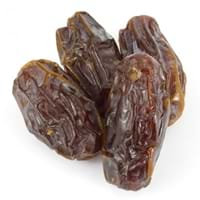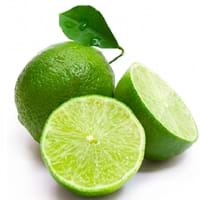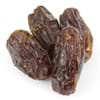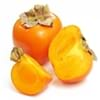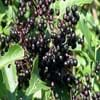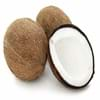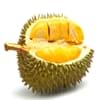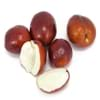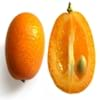Health Benefits
Cancer prevention, Cures gastro-intestinal troubles, Diarrhea treatment, Heart care, Heat stroke treatment, Improves muscular strength, Prevents constipation, Prevents nerve damage, Strengthening of bones
Arthritis treatment, Cholera treatment, Gout treatment, Heart care, Piles treatment, Scurvy treatment
General Benefits
Boosts immune system, Maintains healthy cholesterol level, Strengthens bones
Cures fever, Digestive aid, Eye care, Maintains healthy cholesterol level, Treatment of common cold
Skin Benefits
Anti-aging benefits, Brightens and lightens complexion, Reduces wrinkles, Treatment of skin diseases
Anti-aging benefits, Skin rejuvenation, Treatment of acne, Treatment of dark spots
Hair Benefits
Prevents hair loss, Promotes longer and healthier hair, Protects hair, Regulates hair growth
Promotes longer and healthier hair, Treatment of dandruff
Allergy Symptoms
Redness of eyes, Runny nose, Sneezing, Watery eyes
Breathing difficulty, Coughing, Eye irritation, Hives, Inflammation, Nasal congestion, Runny nose, Skin rash, Wheezing
Side Effects
Allergic reaction, Diarrhoea, Intestinal gas, Stomach pain, Tooth decay, Weight gain
Chances of sunburn
Best Time to Eat
Any time except an hour after meal, Don't consume at night and before bed
Along with meal, Best to drink warm water with lime on an empty stomach, Don't consume at night and before bed
Vitamin B5 (Pantothenic Acid)
Vitamin C (Ascorbic Acid)
Vitamin K (Phyllochinone)
Calories in Fresh Fruit with Peel
Not Available
Calories in Fresh Fruit without Peel
Not Available
Calories in Frozen Form
Not Available
Not Available
Calories in Dried Form
Not Available
Calories in Canned Form
Not Available
Type
Tropical
Citrus, Tree fruit
Season
Spring, Summer
All seasons
Varieties
Barhi, Dayri, Deglet Noor, Halawy, Khadrawy, Medjool, Thoory and Zahidi
Key lime, Persian lime, Kaffir lime, Desert lime, Palestine Sweet Lime, Mexican Sweet Lime, Mary Ellen Sweet Lime
Color
Black, Brown, Red, Yellow
Green
Inside Color
Brown
Light Green
Soil Type
Clay, Loam, Sand
Clay loam, Sandy loam
Climatic Conditions
Hot, Warm
Sunny, Warm to hot climate
Facts about
- Date is known as the tree of life in Middle east.
- Date palms cover 3% of the earth's total farmlands.
- Scholars believe that date (and not apple) was the real fruit mentioned in the Bible's Garden of Eden.
- Lime is the called as the powerhouse of flavors.
- Fresh lime juice is so acidic that it can dissolve concrete.
- Limes are more fragrant and acidic than lemons.
- Persian limes are almost seedless and thorn less.
Spirits
Not Available
Yes
Cocktails
Not Available
Yes
Other Countries
Algeria, Iraq, Oman, Pakistan, South Africa, United Arab Emirates
Argentina, Brazil, India, Mexico
Top Importer
India
United States of America
Top Exporter
United Arab Emirates
Mexico
Botanical Name
Phoenix Dactylifera
Citrus aurantifolia
Synonym
Not Available
not available
Subkingdom
Tracheobionta
Tracheobionta
Division
Magnoliophyta
Magnoliophyta
Class
Liliopsida
Magnoliopsida
Subclass
Arecidae
Rosidae
Order
Arecales
Sapindales
Family
Arecaceae
Rutaceae
Species
P. dactylifera
C. aurantifolia
Generic Group
Palm
Citrus fruit
Difference Between Date and Lime
We might think that Date and Lime are similar with respect to nutritional value and health benefits. But the nutrient content of both fruits is different. Date and Lime Facts such as their taste, shape, color, and size are also distinct. The difference between Date and Lime is explained here.
The amount of calories in 100 gm of fresh Date and Lime with peel is 282.00 kcal and Not Available and the amount of calories without peel is Not Available and 30.00 kcal respectively. Thus, Date and Lime belong to High Calorie Fruits and Low Calorie Fruits category.These fruits might or might not differ with respect to their scientific classification. The order of Date and Lime is Arecales and Sapindales respectively. Date belongs to Arecaceae family and Lime belongs to Rutaceae family. Date belongs to Phoenix genus of P. dactylifera species and Lime belongs to Citrus genus of C. aurantifolia species. Beings plants, both fruits belong to Plantae Kingdom.
